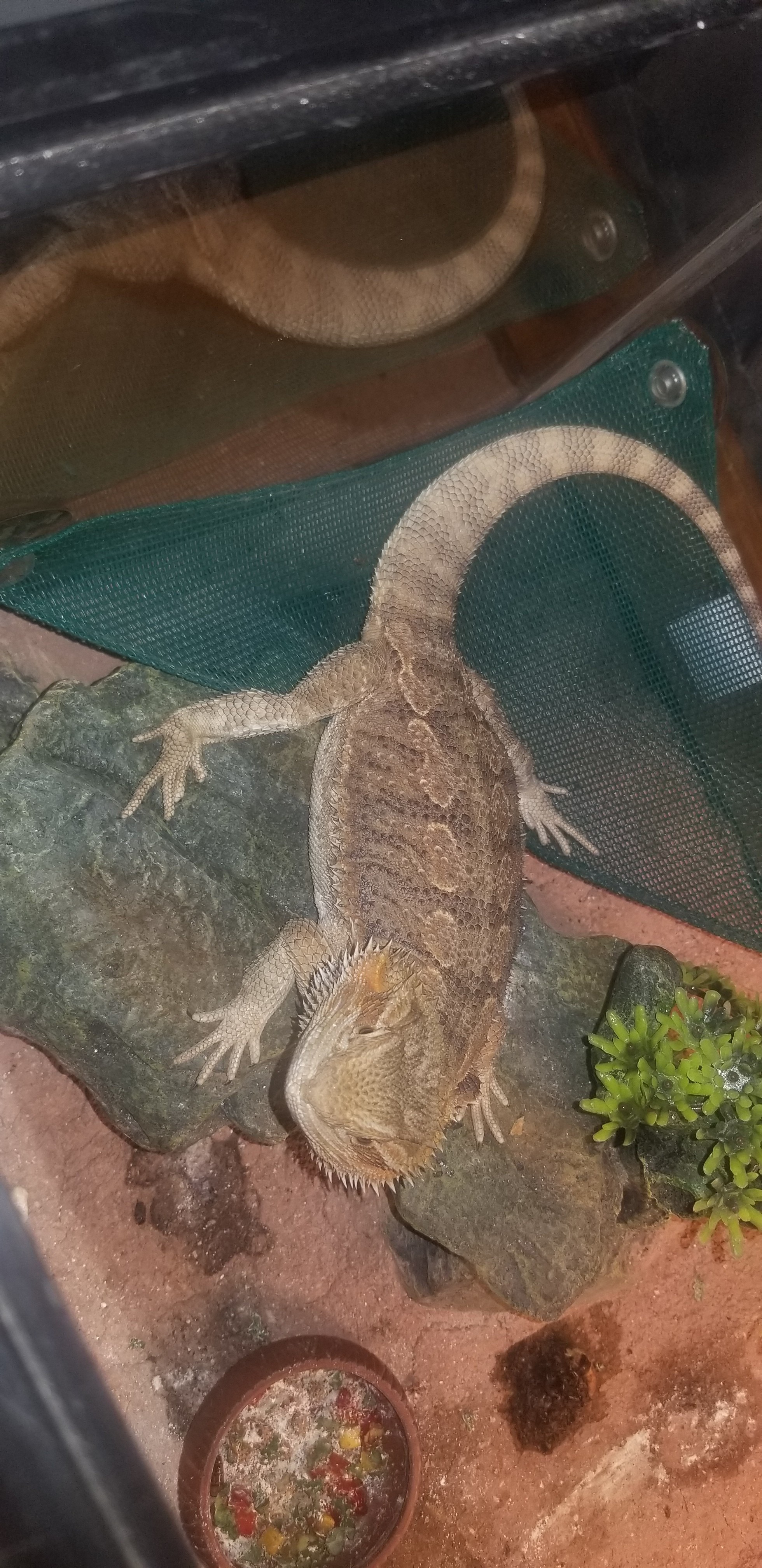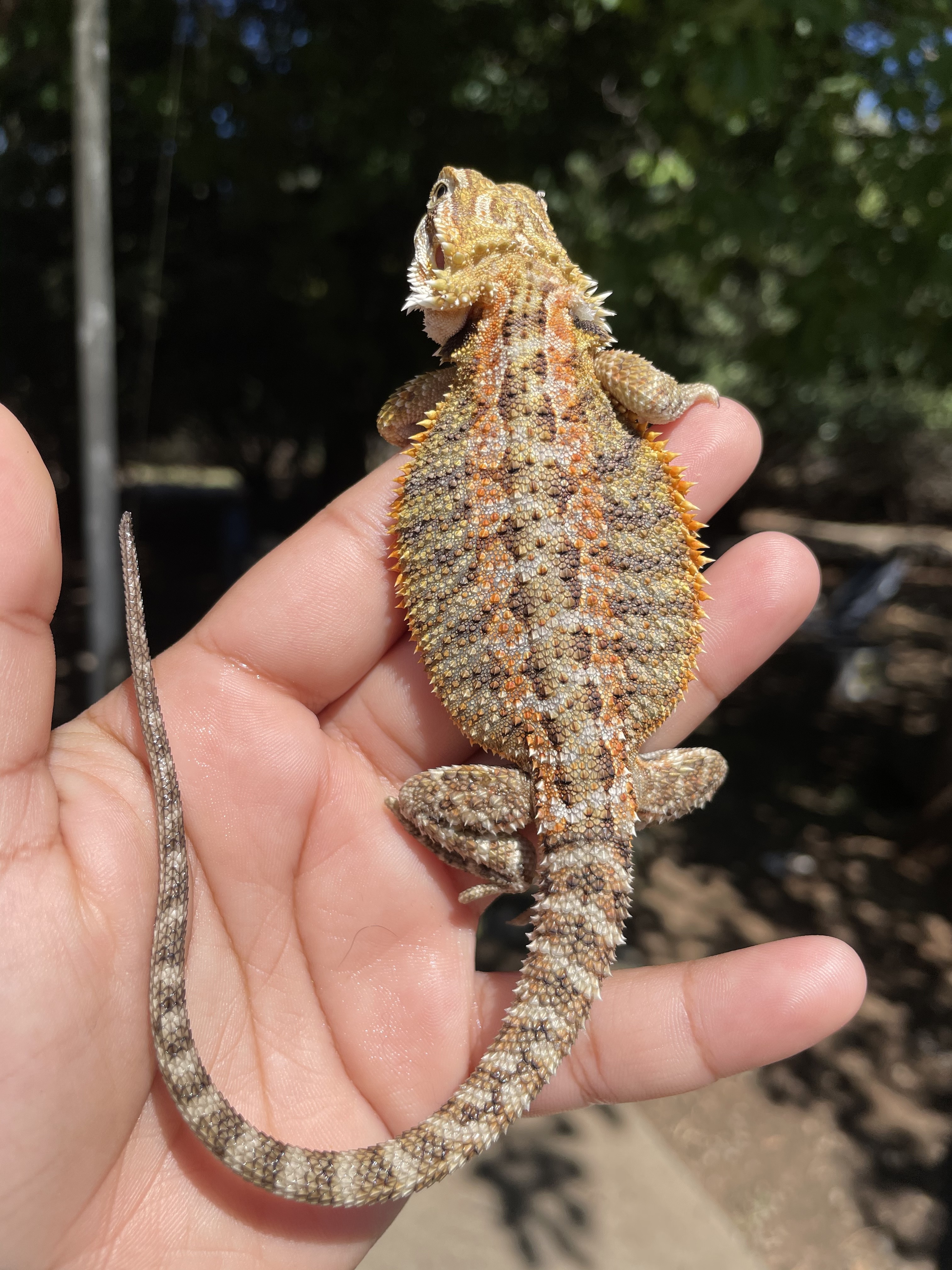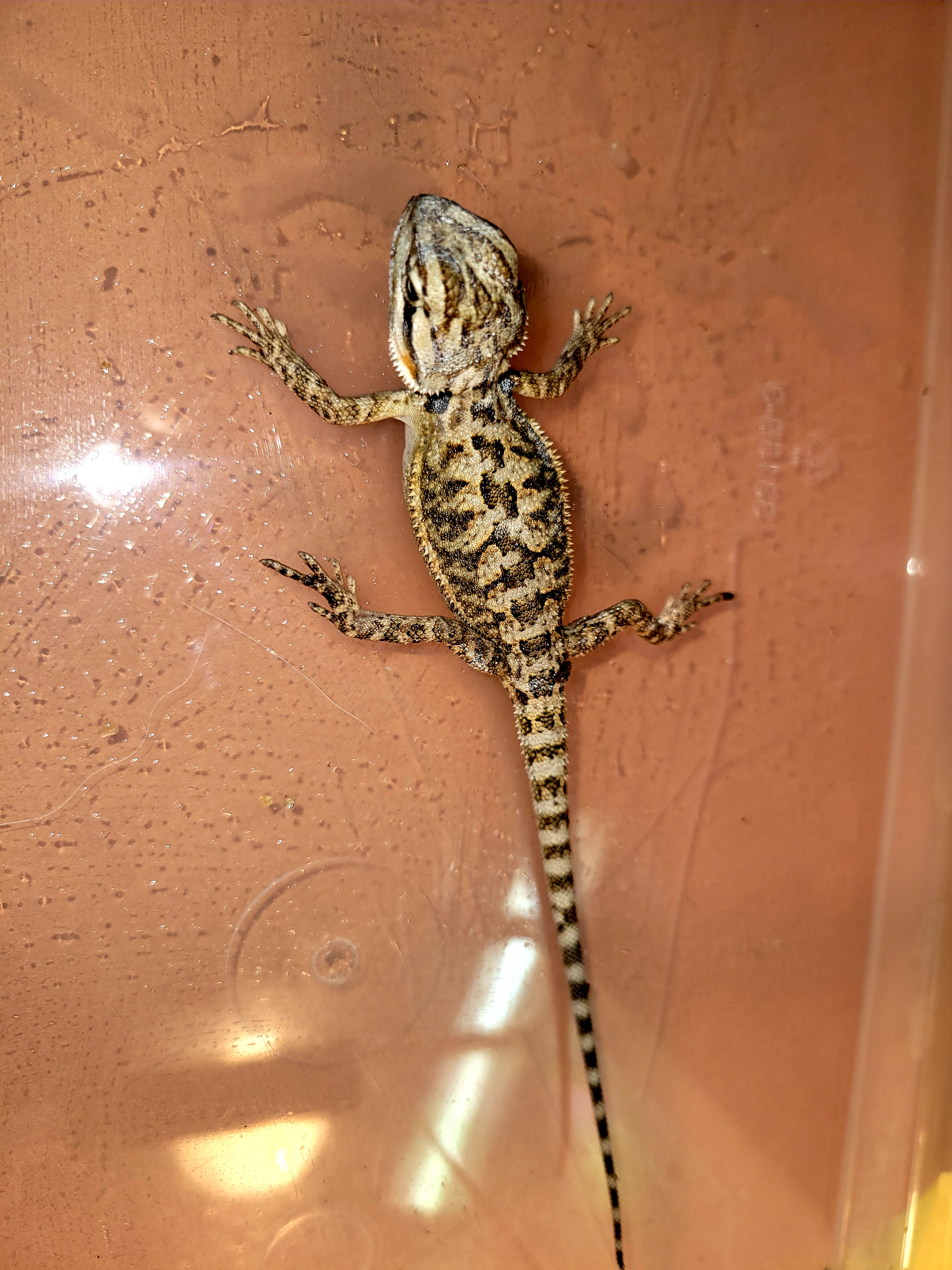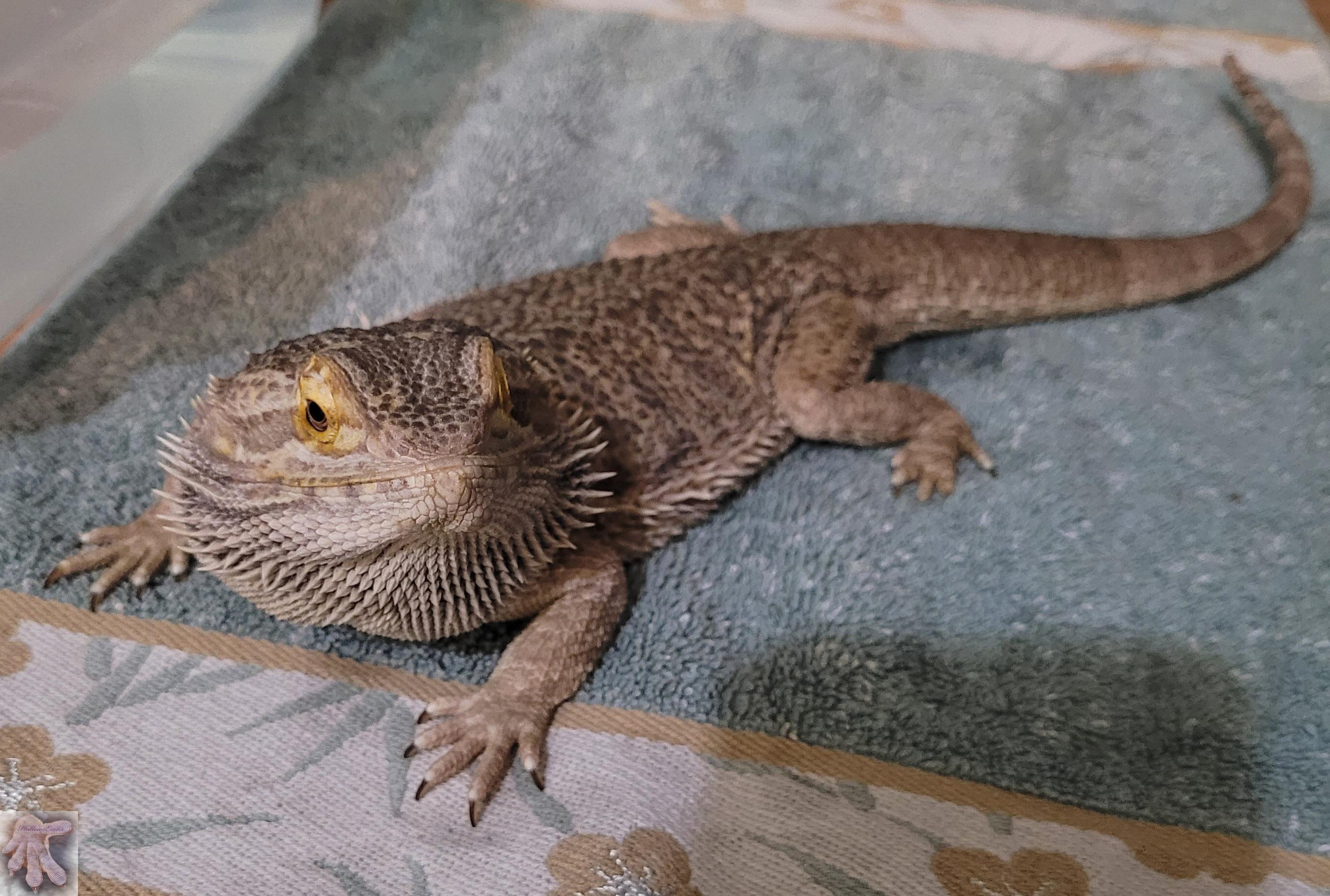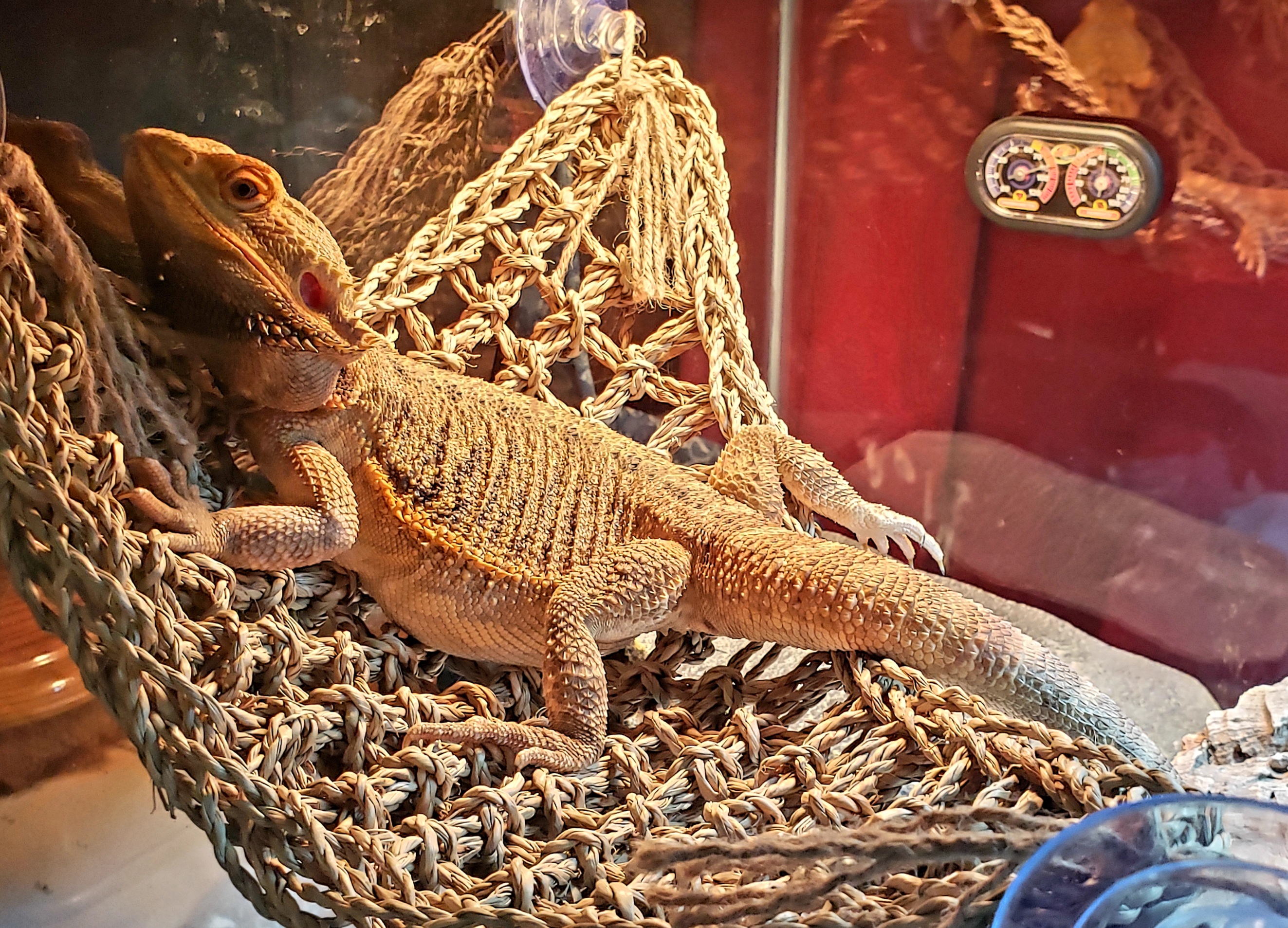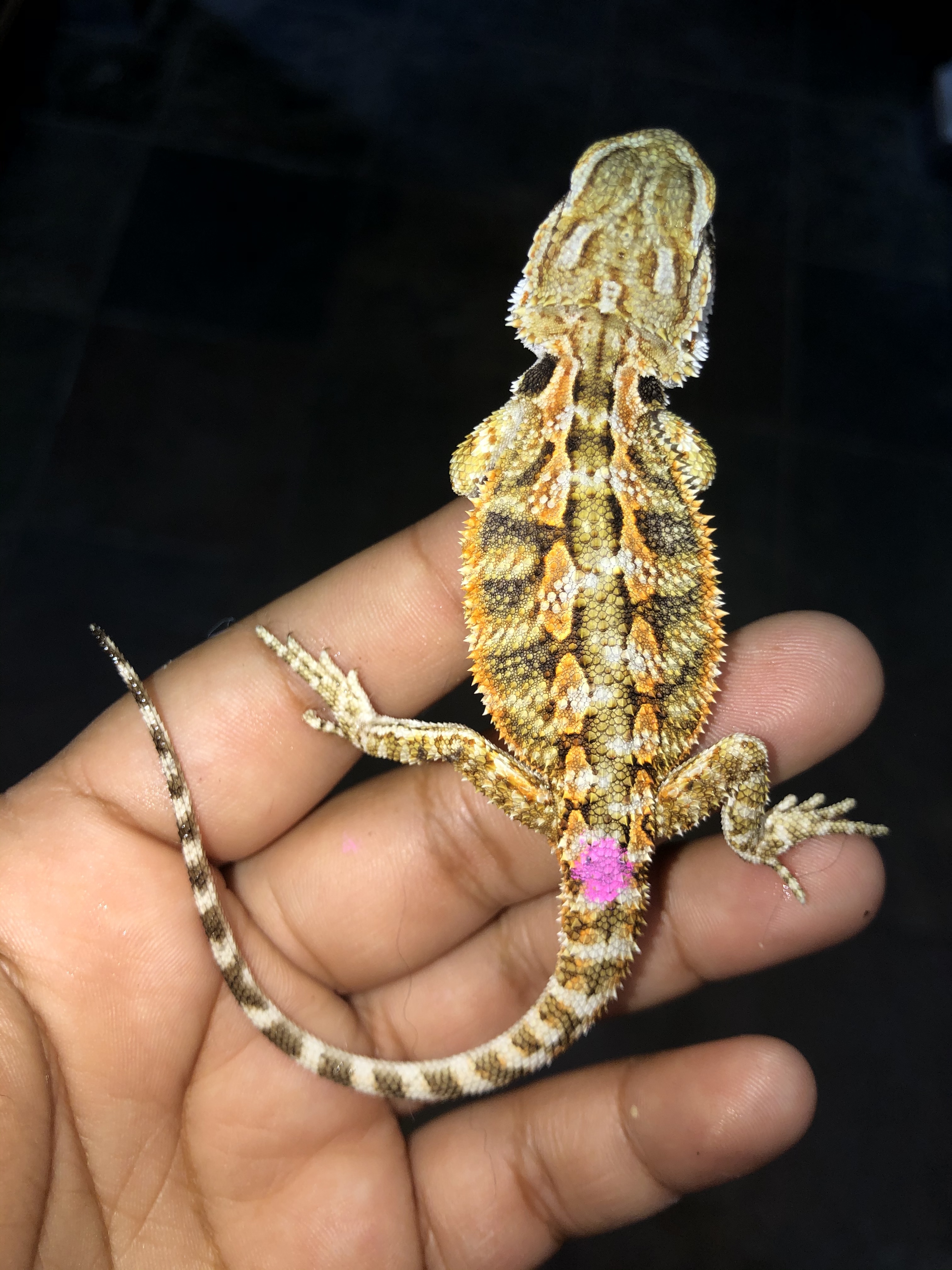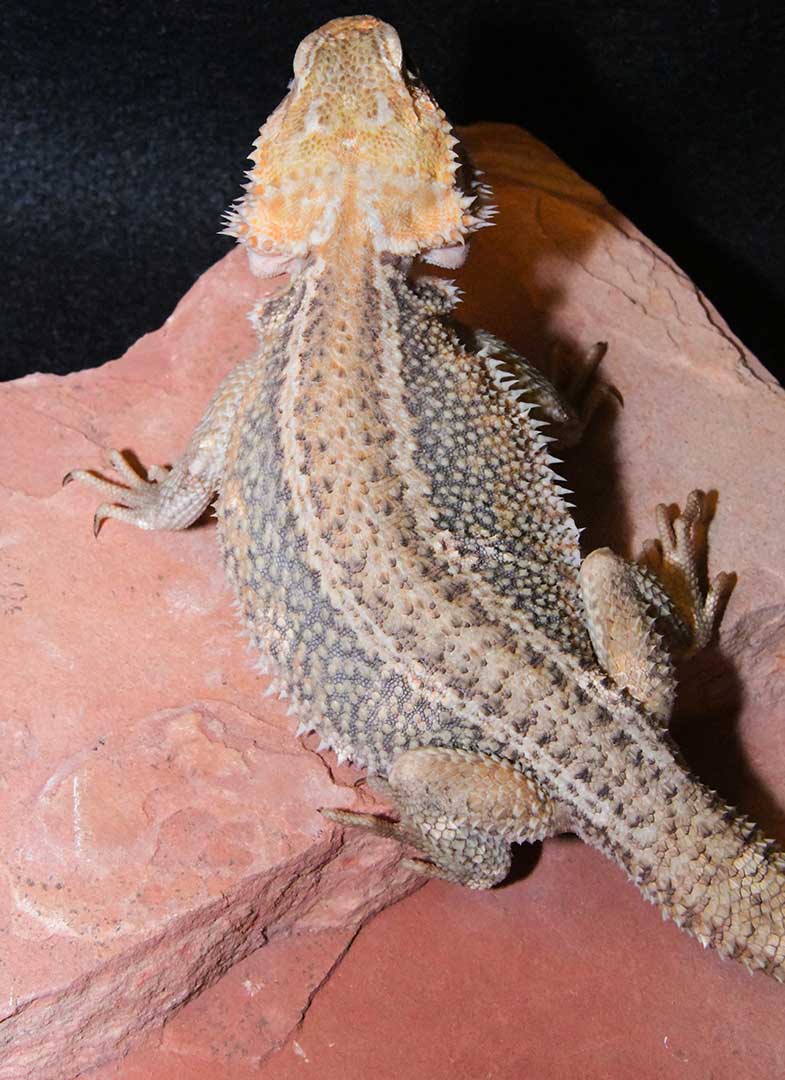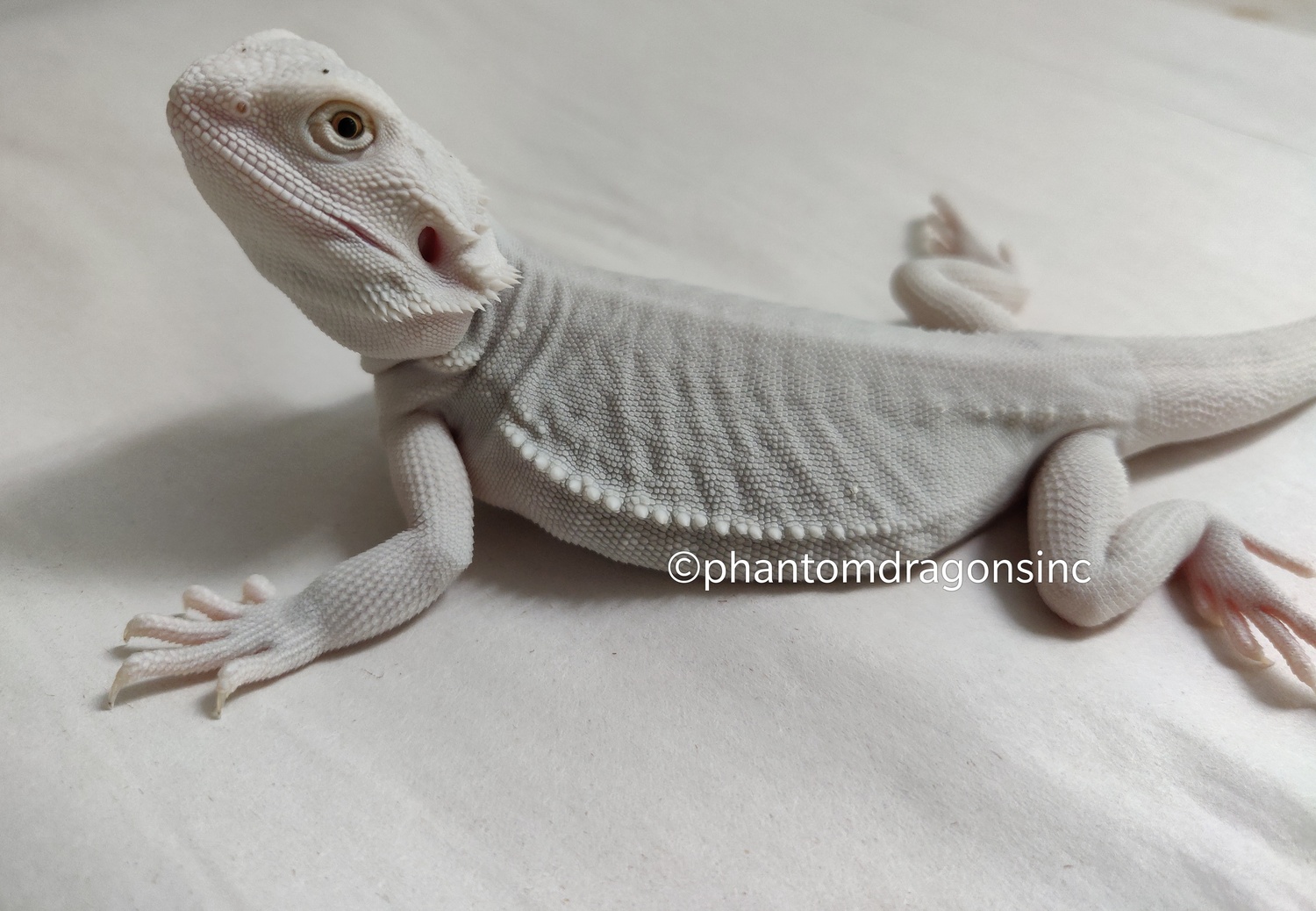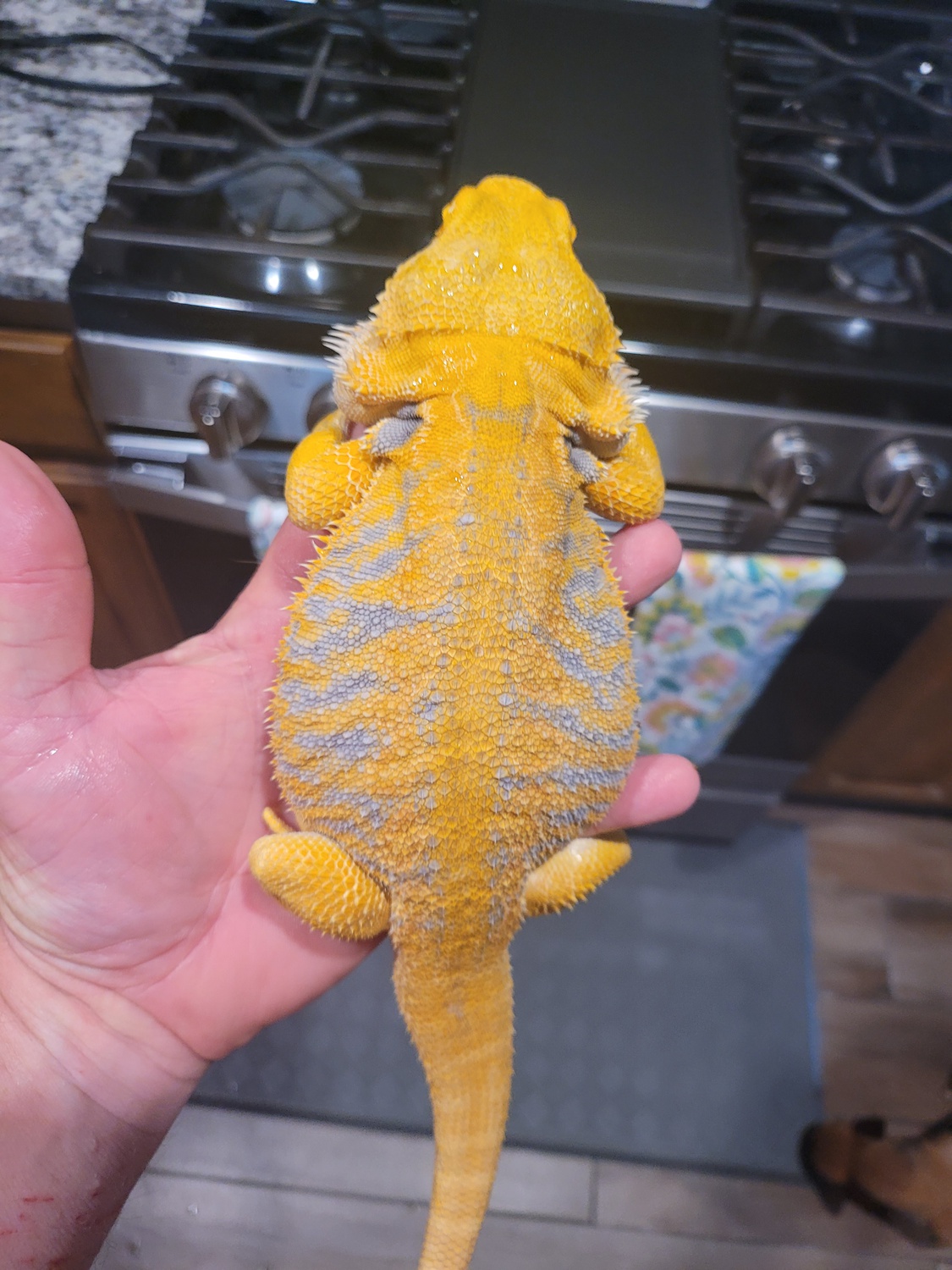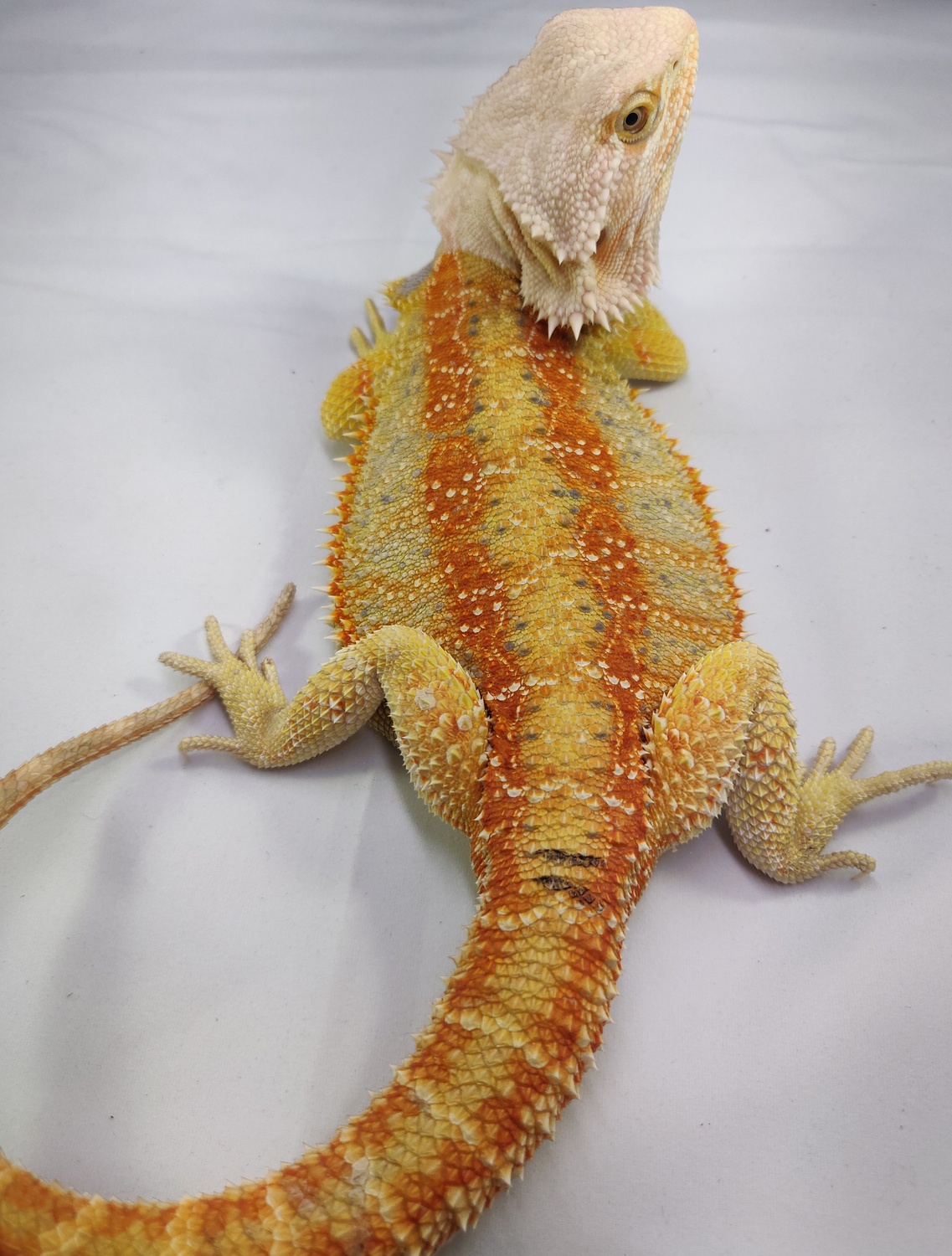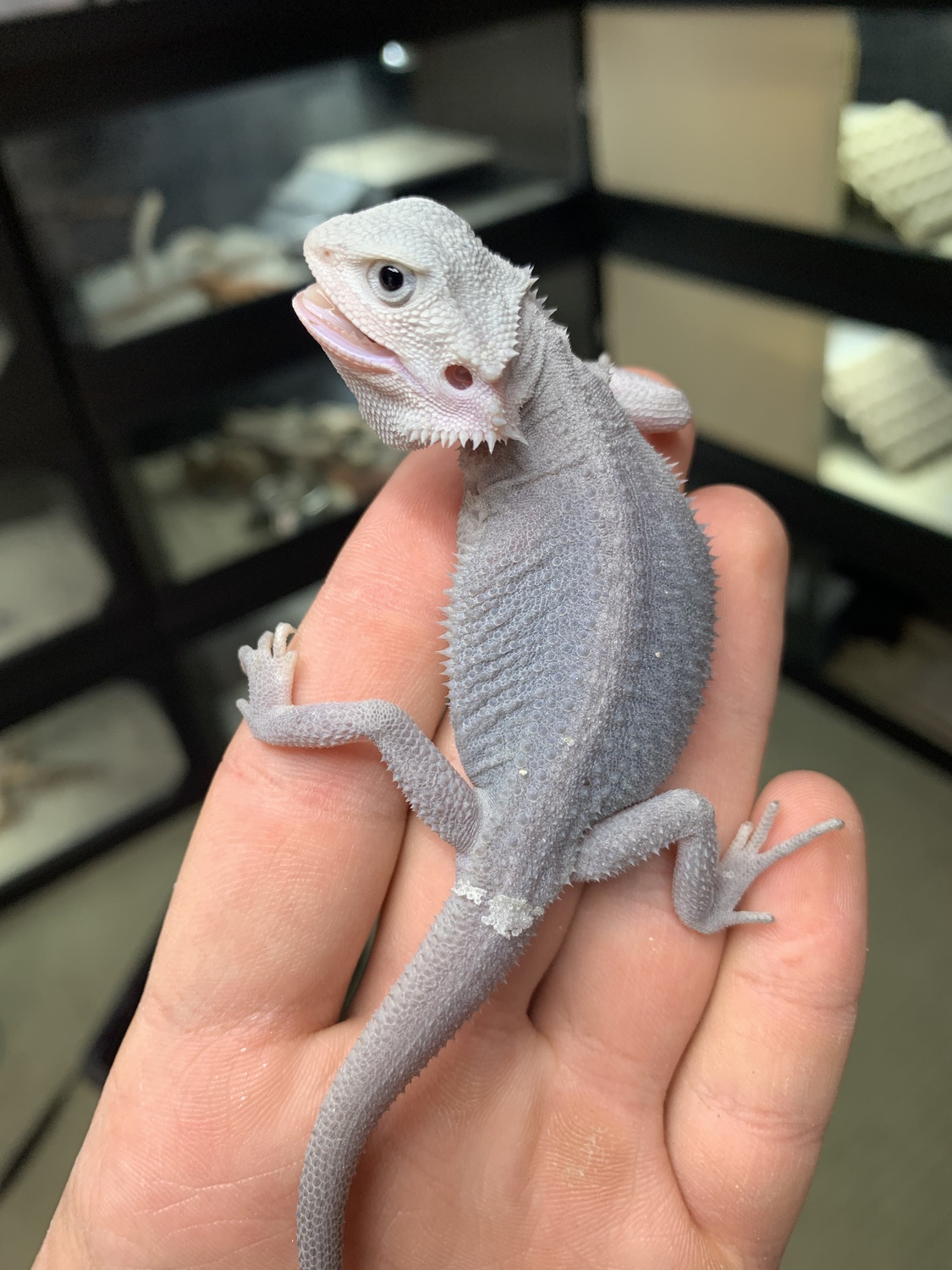Normal
Type: Other
Aliases: Wild, Classic
Issues: N/A
First Produced In: Unknown
Availability: Rarest
Last Updated: 2022-01-31
Do you have any suggestions or corrections for this article?
Click here to contribute feedback
About
Pogona is a genus of reptiles containing six lizard species which are often known by the common name bearded dragons. The name “bearded dragon” refers to the underside of the throat (or “beard”) of the lizard, which can turn black and puff out for a number of reasons, most often as a result of stress, or if they feel threatened. They are a semi-arboreal species, spending significant amounts of time on branches, in bushes, and near human habitation. Pogona species bask on rocks and exposed branches in the mornings and afternoons. Their diet consists primarily of insects, vegetation, and occasionally small rodents. They are found throughout much of Australia and inhabit a wide range of environments, such as deserts, shrublands and Eucalyptus woodlands.
When threatened, bearded dragons will puff up their bodies and beards to ward off predators and make their somewhat dull spikes more dangerous. Bearded dragons display a hand-waving gesture to show submission (most often when acknowledging another bearded dragon’s territory), and a head-bobbing display to show dominance between dragons. Some have the ability to slightly change colour during rivalry challenges between males, in response to ambient temperature changes such as turning black to absorb heat, and other stimuli. Males grow up to 60 cm (24 in) long, and females up to 51 cm (20 in).
Issues
Temperature Sex Determination
Bearded dragons exhibit temperature sex determination. This means that while the embryo is developing, higher temperatures cause dragons with a male genotype to experience sex reversal and express a female phenotype. This produces a bearded dragon that is a female but still has a male genotype. Incubation temperatures above 31 degrees Celsius can cause sex reversal, and the likelihood of sex reversal has a positive correlation with temperature up until 36 degrees Celsius. Incubation temperatures below 31 degrees Celsius cannot trigger sex reversal.[18] Surprisingly, female bearded dragons with a male genotype do not have many differences from genotypic females. According to one study done on bite force, male bearded dragons have a higher bite force than genotypic females, and sex reversed females. However, there was no difference between genotypic females and sex reversed females.
Congenital defects
- Bicephalism
Bicephalism is when a bearded dragon is born with two heads and one body. - Anasarcia
Anasarcia is when a bearded dragon is swollen within the egg. Observing eggs in the incubator, an anasarca egg will appear to be sweating. The cause of this is not known. - Shistosomus reflexa
Shistosomus reflexa is when the organs of a bearded dragon develop outside of the body. - Spinal and limb defects
Spinal and limb defects are abnormalities in the spine, tail, limbs, or toes. This occurs when there are nutritional deficiencies, trauma, or temperature issues during the development of the affected area. - Micropthalmia/anopthalmia
Micropthalmia/anopthalmia is when a bearded dragon is born with small eye(s) or no eye(s). The cause of these defects is a traumatic event or an environmental event that occurred during the development of the eyes. - Hermaphroditism
Hermaphroditism is when the reproductive organs of both male and female are present. Bearded dragons born with both reproductive organs are infertile.
History
Bearded dragons are only naturally found in Australia’s desert regions. Generally they are found in the southeastern Northern Territory and the eastern half of South Australia. Their habitats included woodlands, savannahs, and deserts. It is not uncommon to find them basking in branches, on stumps, or rocks during the morning there.
Bearded dragons were not introduced to the United States until the 1990’s. Since then they have dramatically increased in popularity and can be found in just about every major pet store.
Appearance
Head
Body
Tail
The tail of a Normal Bearded Dragon follows the same patterning and colouration as the rest of the body.
Proven Lines
The most common Bearded Dragon Species is the Pogona Vitticeps, so the chances are if you have a bearded dragon, is is this species. The chart below shows the max size based on the type of bearded dragon, but keep in mind that most dragons will not grow to be as big as their max size.
- Pogona Vitticeps - 24 Inches - central bearded dragon
- Pogona Barbata - 24 Inches - eastern bearded dragon
- Pogona Minor Mitchelli - 18 Inches - northwest bearded dragon
- Pogona Minor Minor - 14 to 18 Inches - western bearded dragon
- Pogona Nullabor - 14 Inches - Nullabor bearded dragon
- Pogona Henrylawsoni - 12 Inches - Rankin’s dragon
- Pogona Minor Minima - 12 Inches -
- Pogona Microlepidota - 4 to 6 Inches - Kimberley bearded dragon
Related Traits
No known related traits

